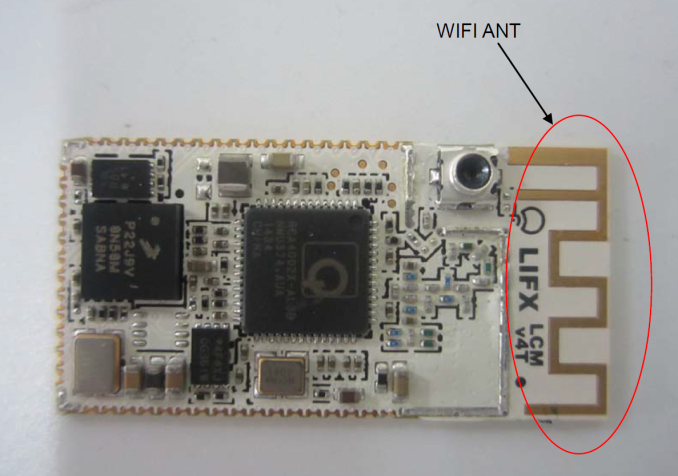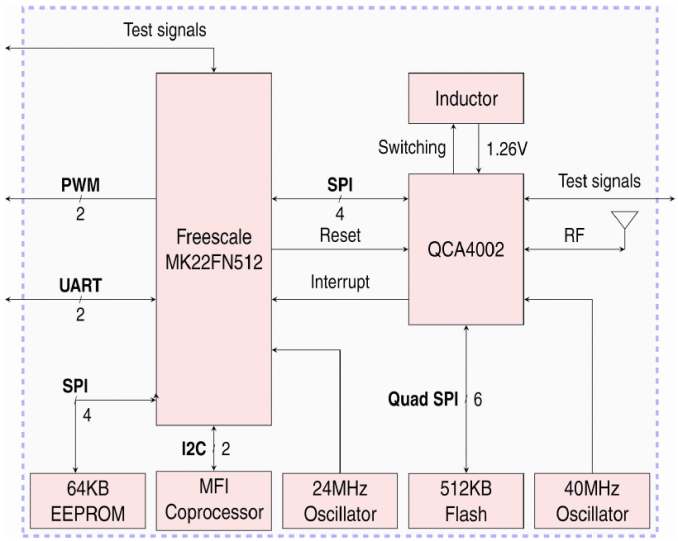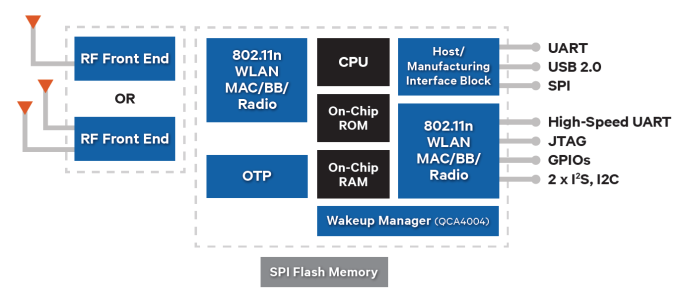LIFX White 800 Smart Bulb Review
by Ganesh T S on June 12, 2015 9:55 AM EST- Posted in
- Home Automation
- Wi-Fi
- Qualcomm Atheros
- LIFX

Introduction and Component Analysis
The Internet of Things (IoT) revolution has sparked an increased interest in home automation. Lighting is one of the major home automation aspects. LIFX is one of the popular crowdfunded companies in this space to have come out with a successful product. The success of their multi-colored LED bulbs brought venture capital funding, allowing them to introduce a new product in their lineup - the White 800. The launch of the White 800 also coincided with firmware v2.00 for the LIFX bulbs.
The initial products from LIFX were multi-color LED bulbs similar to the Philips Hue. The new LIFX White 800 is a white LED bulb with tunable color temperature. Color temperature is an important aspect in the lighting environment. In addition to visual comfort, it also affects human behavioral aspects. Different color temperatures are desirable for different human activities. Therefore, tunable color temperature in a single light bulb is a good thing to have. The specifications of the White 800 indicate 890 lumens of brightness (60W-equivalent), 25000 hours lifetime (22.8 years @ 3 hrs/day), 11 W power consumption and tunable color temperature from 2700K to 6500K.
The first generation LIFX bulbs relied on Broadcom's WICED platform. It also had a TI chip for 802.15.4 mesh networking. However, the White 800 gets rid of the mesh networking aspect and uses the QCA 4002 low-power Wi-Fi platform. This enables a lower price point for the White 800 compared to the other bulbs in the LIFX lineup.
At the heart of the unit is the lighting control module (LCM). LIFX also seems to be targeting this board towards OEMs in addition to using it within the White 800.
LIFX Lighting Control Module (FCC filing)
THe LCM documentation gives more insight into the internal components of the board.
The unit uses a Freescale Kinetis micrcontroller (ARM Cortex-M4-based) coupled with the Qualcomm Atheros QCA 4002. The QCA 4002 is very similar to the AR9330 used in the Ubiquiti mFi devices. The integrated CPU is MIPS-based. It is tuned for low power operation and, correspondingly, lower host CPU performance. The AR933x can run full Linux, but the QCA 400x is targeted towards embedded platforms. In the LIFX, the configuration (QCA 4002) is a 1x1 802.11n 2.4 GHz connectivity platform with the RF switches integrated.
The use of the QCA 4002 software stack on the Kinetis microcontroller allows for AllSeen / AllJoyn certification (the IoT standard backed by Qualcomm). The LIFX White 800 also carries the 'works with nest' logo, thanks to the cloud back-end.
We have looked at the internal hardware in the LIFX White 800. In the next section, we look at what the average consumer sees - the setup and usage process.













55 Comments
View All Comments
pixelstuff - Friday, June 12, 2015 - link
By your comment it sounds like you think "observe" means to visually see something, but the dictionary definition of observe is simply to "notice or perceive (something) and register it as being significant."Zak - Friday, June 12, 2015 - link
The Internet of Things (IoT) revolution? What revolution? It's a solution that needs a problem first, far from a revolution.zepi - Friday, June 12, 2015 - link
The kind of revolution that a lot of people don't really notice it before they are napping on the sofa and telling stories to their grand children.And even then they only notice it from the way the their kid's eyes lighting up from excitement and disbelief when you tell that back then you had to drive your own car, switch on the lights from a physical switch and get groceries yourself. And that no, your fridge & cupboard really didn't used to get filled automatically with your favourite breakfast cereals & milk by little flying drones...
And that your clothes didn't measure your blood pressure and people actually didn't get always get instantly help for heart attack or stroke, because their clothes didn't measure their health level and weren't connected.
etc.
Thing that seem unnecessary and not really revolutionary now, but that you'll be missing once you are used to them.
Ratman6161 - Friday, June 12, 2015 - link
Also explain to them how we didn't have to worry about the security of our light bulbs or software updates for them :)Impulses - Saturday, June 13, 2015 - link
You never had to worry about the security of your POTS or updates for it either, but I don't see anyone ditching their smartphone over the occasional glitch or risk...marvdmartian - Monday, June 15, 2015 - link
The trick, of course, would be getting used to them. That would require actually wanting and using the items.At $60 for a lightbulb, I'm pretty sure that will not ever be the case, at least so far as I'm concerned. I have no need to "use the cloud" to control lights in my house. If I'm home, I can turn them on an off myself. If I'm away, I can utilize motion detectors or timers (both infinitely cheaper than a $60 lightbulb) to do so.
It's also doubtful my interest will be piqued, once the price comes down on these devices. As Zak said, it's a solution in need of a problem.
cjs150 - Friday, June 12, 2015 - link
" it would be good to not install the unit in a tight space with inadequate airflow."Such as, for example, as a downlighter in a ceiling?
The truth is that these are still very niche applications, several years away from mainstream domestic use. Most domestic use has not even moved to LED bulbs never mind IoT connected LED bulbs.
The concept is good, but there is a lot of work needed before ready for mainstream domestic use even for new builds
melgross - Saturday, June 13, 2015 - link
That's not true. I have 11 cans in my kitchen. I'm replacing the compact fluorescents as they go. 6 more and counting. I've also replaced a number of others around the house. My dining room has a 5 light chandelier, at first, I had 5 40 watt incandescent bulbs in there for a total of 200 watts. Then for a short time, about a year and a half, I used compacts, at 10 watts each for 50 watts total. But they didn't last anywhere as long as their ratings, so I let them die. Now, I've got LEDs. They consume 5.5 watts each, for a total of 27.5 watts. They put out a measured lumens that equal the old incandescents. But these last 27.5 thousand hours. I've had them for over a year and a half now, and they're great.I also have LEDs in a number of lamp fixtures.
The prices have plummeted over the last two years as Cree released cheap, but very good bulbs. Everyone else has had to drop their prices accordingly. I would never buy anything else now. And the efficiency keeps going up. The average good quality LED now has a higher lumen/watt ratio than the best compacts.
jabber - Friday, June 12, 2015 - link
Filed under - More expensive cr*p I'll never need.Make your home an even bigger liability.
der - Friday, June 12, 2015 - link
Smart bulbin